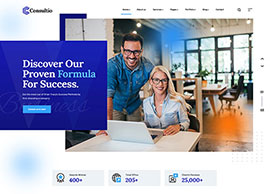If a company faces closure or financial trouble, knowing its liquidation value is crucial. This is the amount it can recover after selling all assets and settling debts, helping entrepreneurs, investors, and creditors understand their potential returns.
In this blog post, we’ll cover how to calculate your company’s liquidation value, the techniques involved, and the things that can influence this value. If you’re gearing up for bankruptcy or you just want to know what your company is worth in a liquidation, you’ll find this guide useful to learn the most important things about liquidation value.
What Is Liquidation Value?
Liquidation value is an estimated value of money a company will get in terms of selling off its assets when it shuts down. It’s done by deducting the liabilities from the total value of assets. Note, though, that liquidation value tends to be less than the market value of the company since assets tend to be disposed of in haste and might not command their full value.
The liquidation value is particularly relevant in cases such as:
Bankruptcy: As a firm becomes bankrupt, the liquidation value will determine how much the creditors and shareholders can recover.
Mergers and Acquisitions: Firms will calculate the liquidation value if they intend selling or merging with another firm.
Credit Applications: Investors and creditors will use the liquidation value to gauge the level of risk involved in lending cash to a business.
Various Forms of Liquidation
There are two primary forms of liquidation: orderly liquidation and forced liquidation. Let’s examine each one:
Orderly Liquidation
In orderly liquidation, the firm has time to dispose of its assets at a reasonable rate, normally with shareholders’ or owners’ agreement. This form of liquidation occurs in a well-organized way, where the assets are sold at a fair value. It can occur as a result of a major person’s resignation or when shareholders decide to wind up the company.
Forced Liquidation
Forced liquidation occurs when a company is performing poorly or cannot repay its debts. Forced liquidation can be voluntary or ordered by the court. Forced liquidation is quicker and can lead to assets being sold at a loss since the company has less time to sell them at a good price.
Methods for Calculating Liquidation Value
There are various ways for computing liquidation value. These different methods accentuate different angles of a business firm’s assets and liabilities. Let’s scrutinize each individually:
1. Market Value
Market value is the price an asset would receive if it were to be sold in the market. Price can vary depending on supply and demand, the state of the market, and other variables. The liquidation value hinges on what a company might actually sell its assets for within a certain time frame.
2. Book Value
Book value is what an asset is worth on a company’s balance sheet. It doesn’t take into account depreciation or market fluctuations, so the book value of the asset may not be its true market value.
3. Liquidation Value
Liquidation value is often less than book value. This value is what an asset can be sold for in a forced sale. For example, selling property under pressure may not be at the highest price. The liquidation value provides a realistic figure of what you can get when assets have to be disposed of quickly.
4. Salvage Value
The salvage value is the approximate value of an asset at the end of its useful life. This is the value you can reasonably expect to receive for an asset when it is no longer in working or usable condition.
How to Calculate the Liquidation Value of a Company
To calculate the liquidation value, you need to consider both the assets and liabilities of a company. Here’s a straightforward step-by-step guide to calculate your company’s liquidation value:
1. Read the Most Recent Annual Report
Begin by acquiring the company’s most recent financial statements. These consist of balance sheets and income statements. These statements will provide you with an overview of the company’s assets and liabilities.
2. Enumerate All Assets
Identify and enumerate all tangible assets your business possesses. Tangible assets consist of:
Real estate: Office buildings, company-owned land, or company-owned buildings.
Equipment: Vehicles, machinery, and other physical possessions.
Inventory: Raw materials or products in storage.
Keep in mind that intangible assets such as patents, trademarks, or goodwill are not usually part of the liquidation value.
3. Enumerate All Liabilities
Then enumerate all the liabilities of the company. Liabilities are debts or obligations the company owes to pay, including:
Loans: Any loans or lines of credit outstanding.
Accounts payable: Amounts due to suppliers and vendors.
Employee wages: Unpaid wages and benefits.
4. Subtract Liabilities from Assets
To find the liquidation value, you can subtract total liabilities from total assets. The answer will provide an approximation of the amount of money you can recover by selling the assets and satisfying the debts.
Liquidation Value = Total Assets – Total Liabilities
5. Consider Timing
The rate of liquidation can significantly affect the ultimate value. The quicker the liquidation, the lower the amount of money the company will get. An orderly, well-managed liquidation can enable the company to get a better price for its assets.
Factors That Influence Liquidation Value
There are various factors that can affect the liquidation value of a business. These include:
1. Liquidation Timeframe
If a company must liquidate in a hurry, the assets’ value could go down because there is not enough time to locate buyers willing to pay market price. Longer liquidation provides time for bids and higher prices.
2. Asset Performance
The performance and condition of the assets for sale also matter. If the assets are in disrepair or old, they will not fetch as much cash.
3. Business Operations
If the company is experiencing major operations changes or financial issues, then it may depreciate the liquidation value. For instance, if a business is reducing expenditure or laying off employees, then it may negatively affect its sale of assets for a high amount.
4. Market Conditions
The general market conditions also play a role in the liquidation value. When the market dips, it is possible that one may not get a good price for selling the assets.
Conclusion
Computing the liquidation value of a business helps you know what it’s worth if you close down or dispose of assets. Whether you are bankrupt, selling the company, or simply determining its value, you may need to know the liquidation value in making decisions. By looking at your business assets and liabilities as well as such elements as timing and condition of assets, you can approximate how much cash is left after liquidation.
If you are in need of help with liquidation value determination or the process of liquidation, seeking the opinion of professionals is recommended. If you are looking for the best audit company in Dubai, a professional audit company can assist you through the process and help you obtain the maximum value for your assets.





































